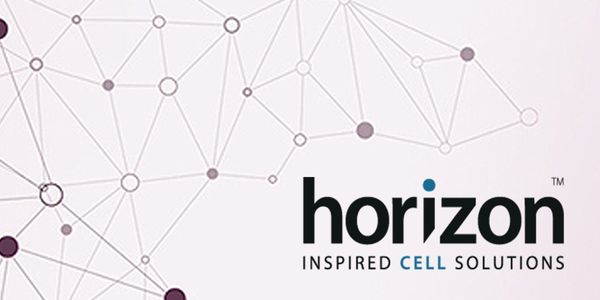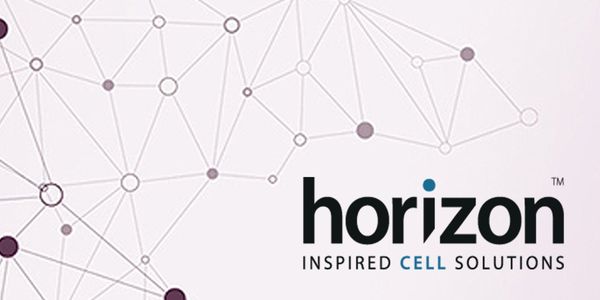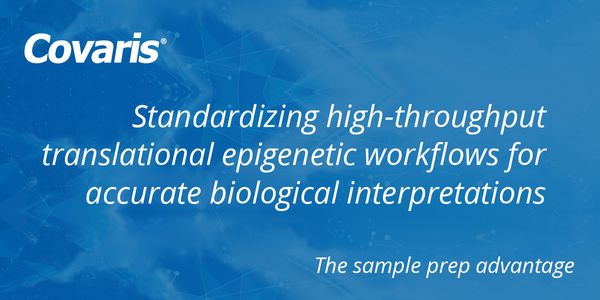Next-Generation Sequencing
Next-Generation Sequencing: A high-throughput method used to determine a portion of the nucleotide sequence of an individual's genome. This technique utilizes DNA sequencing technologies that are capable of processing multiple DNA sequences in parallel. Also called massively parallel sequencing and NGS.
-
There have been an increasing number of successful human gene therapy clinical trials, and in particular gene delivery vehicles or vectors based on the adeno-associated virus (AAV) have enabl...
Learn how to optimize CRISPR-Cas9 editing efficiencies in cell lines and primary cell types using modified synthetic sgRNA. Includes tips for achieving maximum knockout and knock-in efficienc...
The most recently developed genome editing system, CRISPR-Cas9 has greater inherent flexibility than prior programmable nuclease platforms. Because of its simplicity and efficacy, this techno...
The National Institute of Standards and Technology (NIST), is the measurement institute of the U.S., supplying unbiased expertise in measurements and standards to support growth in all sector...
The CRISPR-Cas9 system has proven to be a powerful tool for genome editing allowing for the precise modification of specific DNA sequences within a cell. Many efforts are currently underway t...
SEP 27, 2018 | 8:00 AM
DATE: September 27, 2018TIME: 8:00AM PDTRecent advances in phage display for molecular evolution incorporate deep sequencing to enable greater library coverage. However, severe gap...
SEP 18, 2018 | 8:00 AM
DATE: September 18,2018TIME: 08:00am PDT, 11:00am EDT CRISPR-Cas9 gene editing strategies have revolutionized our ability to engineer the genomes of diverse cell types and sp...
SEP 18, 2018 | 7:00 AM
DATE: September 18, 2018TIME: 07:00am PDT, 2:00pm GMT Next Generation Sequencing has become an essential tool in clinical diagnostic laboratories, however this technolo...
SEP 12, 2018 | 8:00 AM
DATE: September 12, 2018 TIME: 08:00am PDT, 11:00am EDT In the last presentation of this webinar series, we will continue our discussions on recent advancements i...
AUG 16, 2018 | 8:00 AM
DATE: August, 16, 2018TIME: 08:00AM PDTThis webinar will review recent advancements in the application of next-generation sequencing of T cell receptor beta (TCRB) chain repertoires towards...
AUG 09, 2018 | 8:00 AM
DATE: August 9, 2018TIME: 8:00am PDT, 11:00am EDT Current exon-level arrays and NGS techniques for CNV detection are plagued with a high number of false-positive...
Speaker:
Nicole de Leeuw, PhD
, Kristina Cusmano-Ozog, MD
Sponsored By: Thermo Fisher Scientific - Applied Biosystems
AUG 08, 2018 | 1:00 PM
DATE: August 8, 2018 TIME: 1:00pm PDT, 4:00pm EDT To kick off our three-part immuno-oncology webinar series, Dr. Cawley will highlight recent advancements driven...
AUG 07, 2018 | 8:00 AM
DATE: August 7, 2018TIME: 08:00AM PDT, 11:00AM EDTWe are currently at an exciting precipice in clinical oncology management, where an increased rate of biomarker identification is drivi...
Advances in DNA sequencing, based upon massively parallel sequencing, has resulted in dramatic advances in DNA sequence output in the past few years. It is now possible to generate terrabases...
The introduction of targeted therapies into the clinical management of lung adenocarcinoma has had a massive impact on patient care. Multiple driver mutations are now druggable and treatments...
Speaker:
Paul Hofman, MD, PhD
Precision medicine and next-generation sequencing – Two terms characterized by a highly dynamic nature, strong innovations and a bright future. Both merged together will exert a decisiv...
























